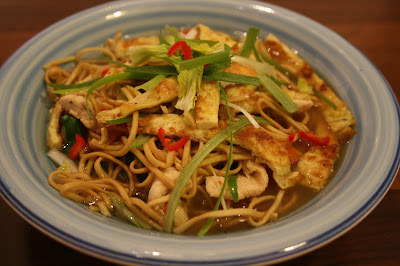Pulses are one of the most satisfying and comforting ingredients to cook and eat. What could be better on a cold evening than a lovely hot bowl of stew flecked with chickpeas or cannellini beans? Couple this with the wonderful aroma of fresh rosemary and the intensity of chorizo and you really have something. There is little else to say about this dish: it really is just an amalgamation of some delicious ingredients to create a heartwarming supper. The recipe as you see it below comes directly from my kitchen scrapbook notes that I scribbled out whilst happily creating the final dish, a little snapshot into our kitchen antics.
Chorizo Stew
Serves 2 with leftovers
Ingredients
Chorizo Stew
Serves 2 with leftovers
Ingredients
2 shallots, 1 finely chopped and 1 sliced
2 garlic cloves, grated
1 pepper, sliced into long strips
200 g raw chorizo sausage, diced
a generous splash of red wine
1 tsp finely chopped parsley stalks
1 can chopped tomatoes
1 can chickpeas, drained
1/2 tsp hot smoked paprika
1 can chickpeas, drained
1/2 tsp hot smoked paprika
pinch of cinnamon
1 tsp tomato purée
1 bay leaf
2 sprigs fresh rosemary
chopped parsley
salt, pepper and a pinch of sugar
oil
1 bay leaf
2 sprigs fresh rosemary
chopped parsley
salt, pepper and a pinch of sugar
oil
Notes: Use any colour pepper you like, I used an orange one as that's what I had in the fridge at the time. The chopped parsley stalks are optional but I used them because I had them and didn't want them to go to waste. Feel free to substitute any of your favourite beans for the chickpeas - cannellini or butter beans would be excellent.
Method
1. Heat a large frying pan and dry-fry the chorizo until it has lightly coloured and given up some of its oils. Remove and set aside.
2. Add a splash of olive or rapeseed oil along with the diced shallot and a pinch of salt. Soften the shallots for a couple of minutes before adding the garlic, remaining shallots, peppers and parsley stalks if using. Keep cooking over a medium heat for around 5 minutes until soft.
3. Add back the chorizo with the hot smoked paprika and a pinch of cinnamon and fry for 1 minute.
4. Splash in some red wine (say about 60 ml or 1/4 cup) along with the bay leaf and rosemary sprigs and cook until the wine has reduced down.
5. Add the chickpeas, chopped tomatoes and tomato purée. Fill the empty tomato can with water, capturing any remaining tomato juice and add to the pan. Season to taste with salt, pepper and a good pinch of sugar to balance the acidity of the tomatoes. Bring to the boil then simmer over a low heat until the vegetables soften and the flavours develop and mingle.
6. Once cooked, finish with fresh parsley and serve with cous cous, bulgur wheat or crusty bread.
Sasha









